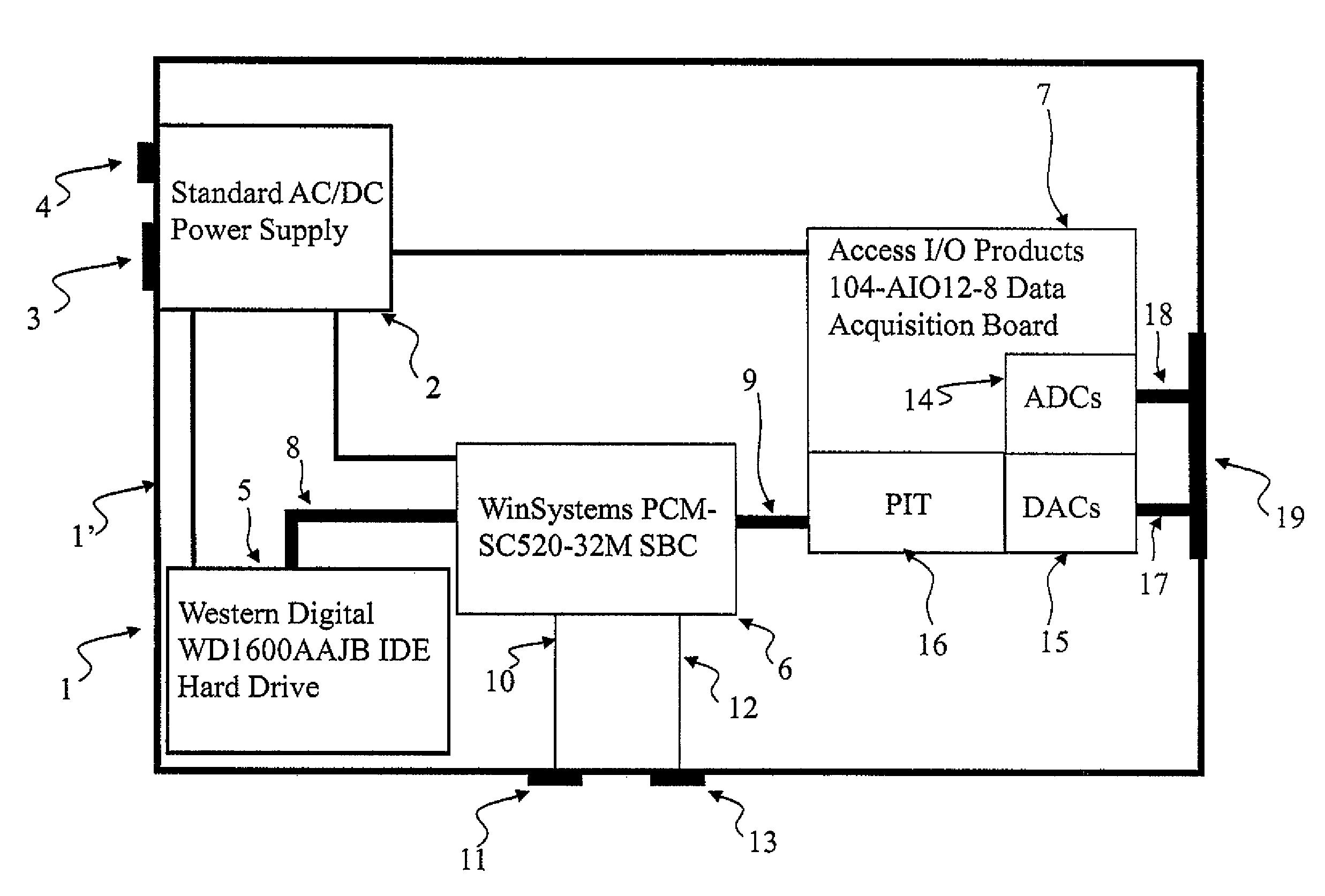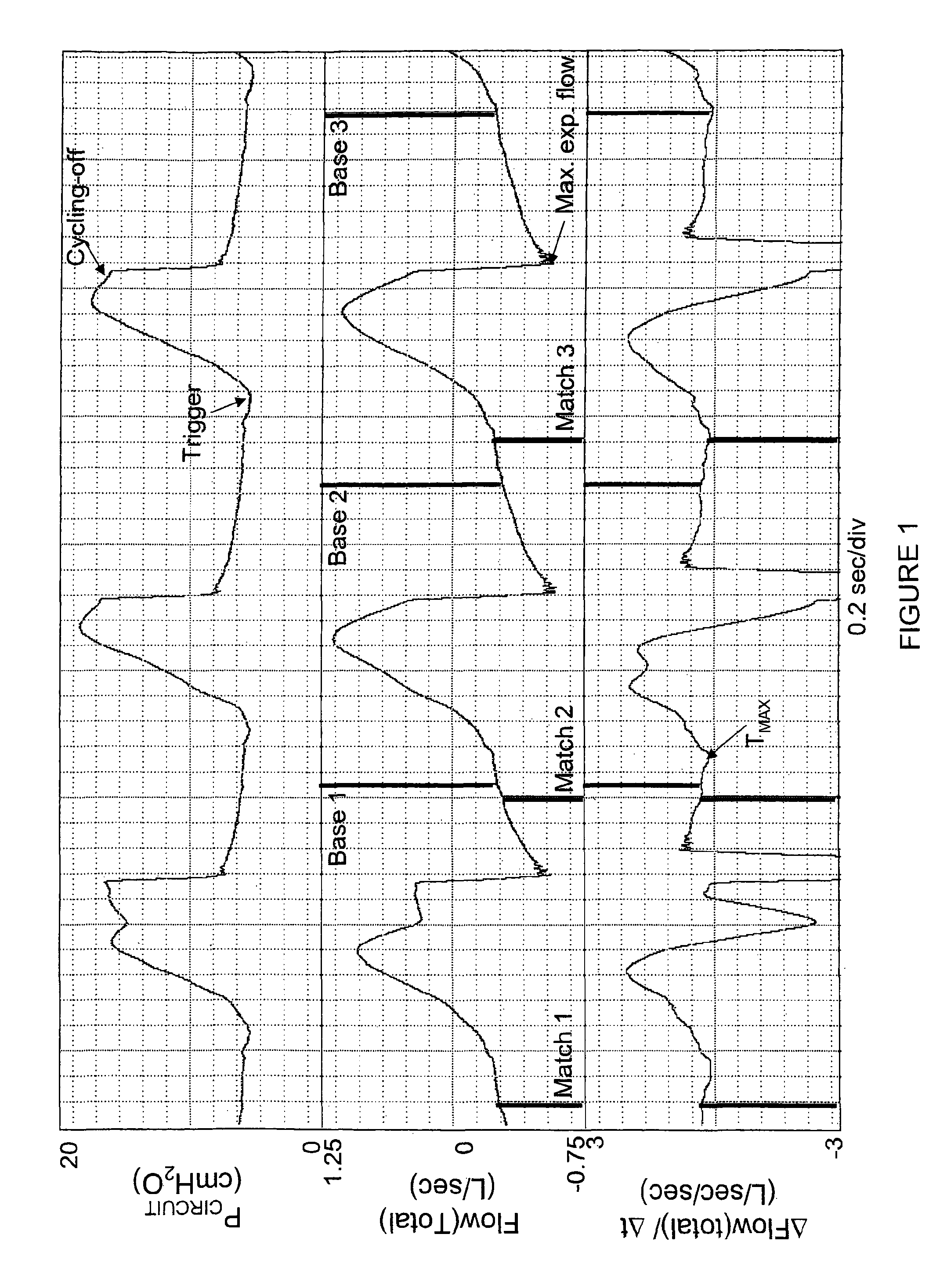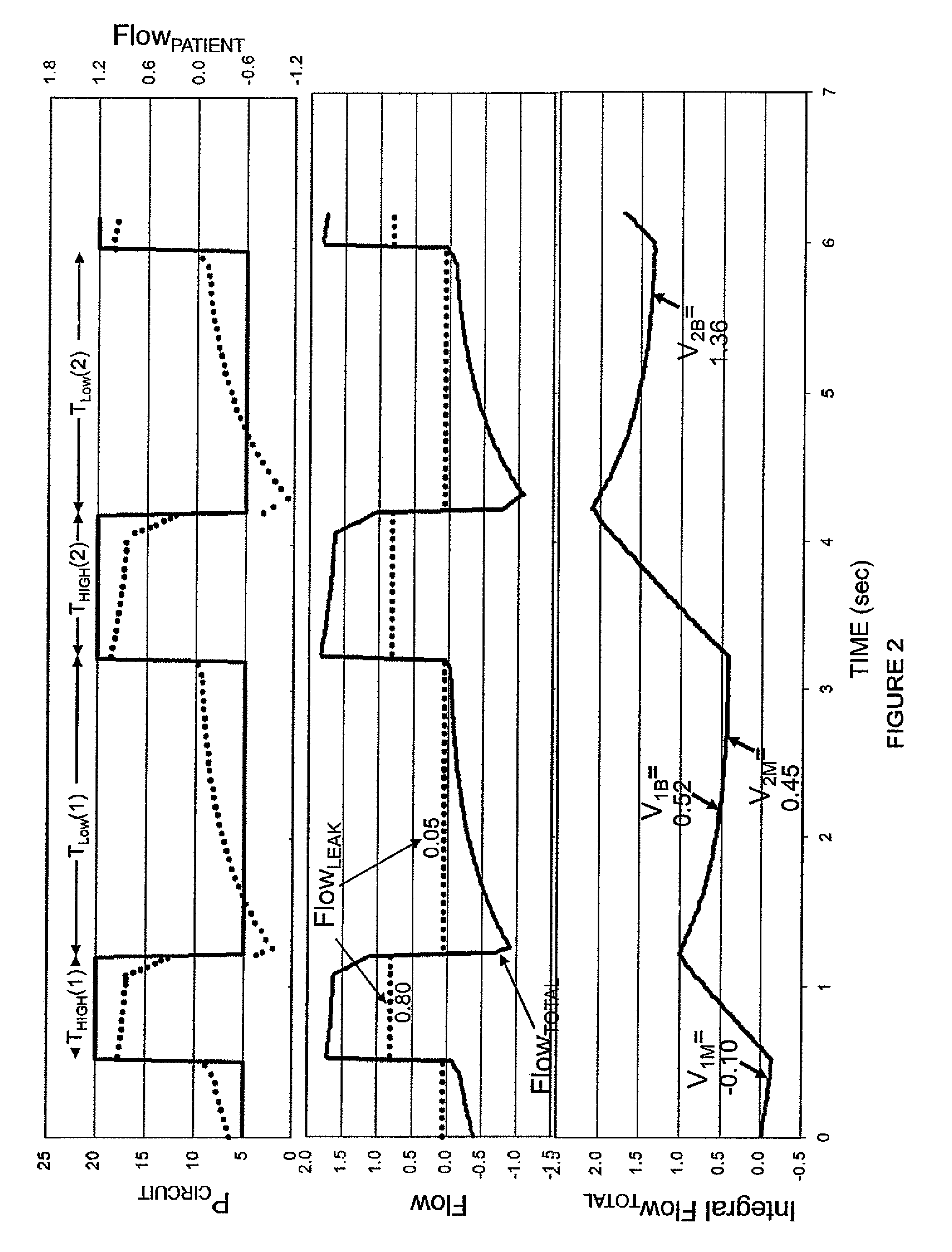Method for estimating leaks from ventilator circuits
a ventilator circuit and leakage estimation technology, applied in the field of ventilators, can solve the problems of air leaking from the ventilator circuit, leakage of different components of the tubing, and increase the anatomical size of the leakag
- Summary
- Abstract
- Description
- Claims
- Application Information
AI Technical Summary
Problems solved by technology
Method used
Image
Examples
embodiment
PREFERRED EMBODIMENT
[0120]Two embodiments were built. The first was a non-real time system used to develop, test and refine the algorithms. This embodiment utilized a desktop computer and the algorithms were coded using the Matlab system. It incorporated all the four methods proposed to generate indices that reflect pattern of pressure delivery (Methods 2A to 2D in the Detailed Description of the Invention section). Testing of this embodiment was done using digital files recorded previously, which contained signals corresponding to circuit pressure and flow rate measured during mechanical ventilation of several patients. The original flow rate signals in these files did not incorporate any leaks as they were obtained during invasive ventilation with a tight tracheal seal. A virtual leak was added to the flow rate signal by generating a new channel (Flow+Leak) comprised of the original flow rate signal plus a function related to the recorded circuit pressure, representing a specified...
PUM
 Login to View More
Login to View More Abstract
Description
Claims
Application Information
 Login to View More
Login to View More - R&D
- Intellectual Property
- Life Sciences
- Materials
- Tech Scout
- Unparalleled Data Quality
- Higher Quality Content
- 60% Fewer Hallucinations
Browse by: Latest US Patents, China's latest patents, Technical Efficacy Thesaurus, Application Domain, Technology Topic, Popular Technical Reports.
© 2025 PatSnap. All rights reserved.Legal|Privacy policy|Modern Slavery Act Transparency Statement|Sitemap|About US| Contact US: help@patsnap.com



